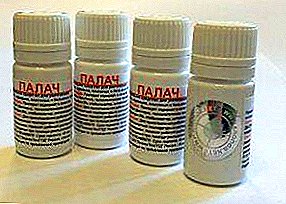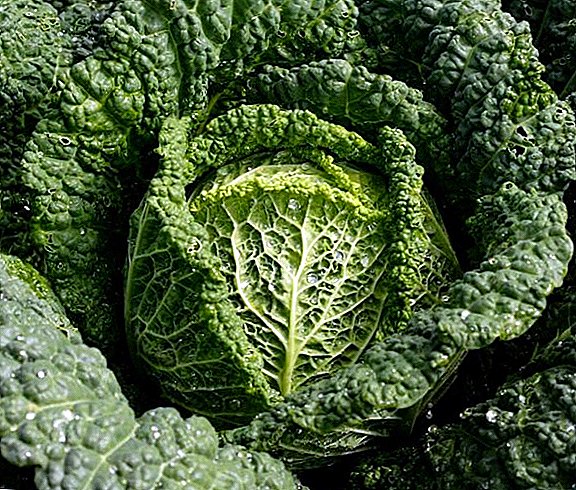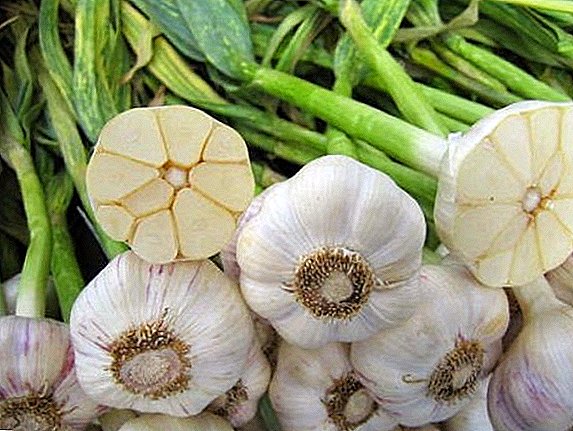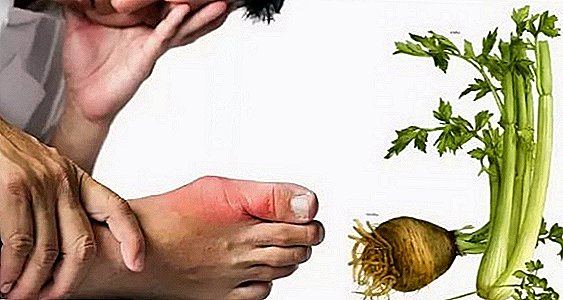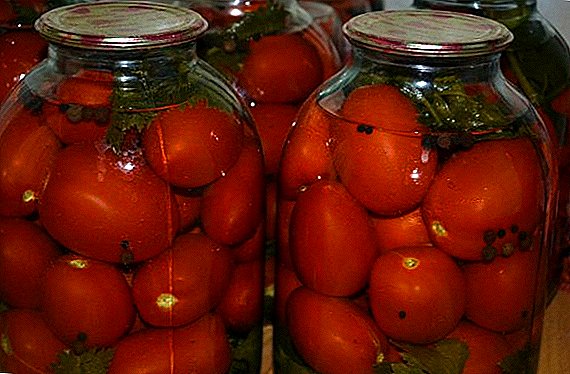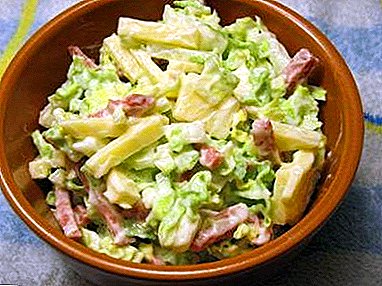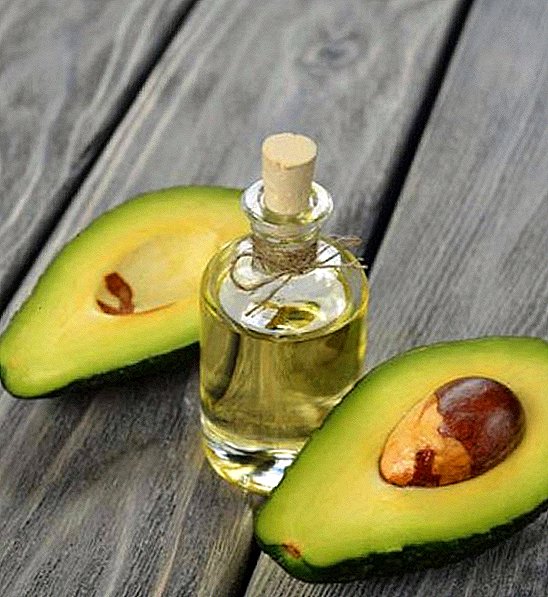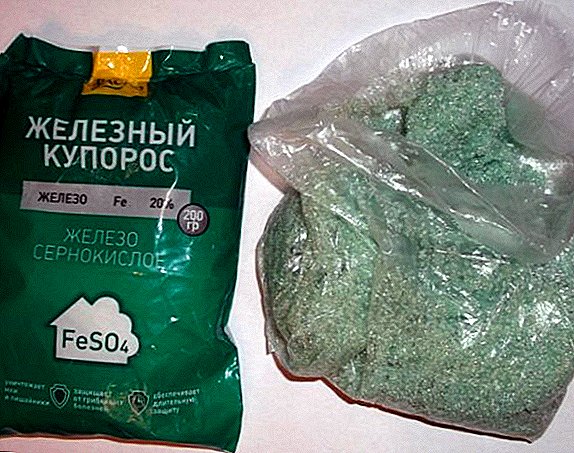 It is impossible to grow a healthy, productive garden without cultivating cultivated plants with various preparations for diseases and pests. Despite the fact that the modern market offers a wide range of pest control agents for fruit trees, not all of them are effective, and some quite expensive.
It is impossible to grow a healthy, productive garden without cultivating cultivated plants with various preparations for diseases and pests. Despite the fact that the modern market offers a wide range of pest control agents for fruit trees, not all of them are effective, and some quite expensive.
Therefore, many experienced gardeners recommend the use of long-proven, well-known and budgetary funds, one of which is iron sulfate. In horticulture, iron sulfate is widely used, it is used both for prevention and for the purpose of eliminating many plant diseases, including fungal diseases, as well as protection against insect pests.
Important! It is very important not to confuse iron and copper sulphate; these are different substances. Iron is not used in the preparation of Bordeaux mixture. Also it is impossible to process iron sulphate of tomatoes and potatoes.
What is iron sulphate: composition and properties
Iron vitriol, iron sulphate or ferrous sulphate is a salt that is obtained when sulfuric acid and ferrous iron are added to the reaction.
At normal room air temperature, the substance has the form of turquoise or greenish-yellow small crystals (pentahydrate). The amount of active substances in such crystals is 53%.
When used iron sulfate

A solution of ferrous sulphate is characterized by high acidity, which can cause burns if sprayed on green leaves. Consequently, garden treatment with iron sulfate should be carried out in early spring or after the leaves fall in the fall.
Both in spring and autumn, the main cause of infection by fungal diseases are the remains of leaves and branches on the soil surface. Therefore, in the spring, not only the trees are processed, but also the ground around them.
In the autumn, it will be much more efficient to collect and burn down fallen leaves and plant residues, as well as dig around tree trunks before spraying the trees.
In horticulture, vitriol is traditionally used in such cases:
- for preventive treatment of cellar walls and vegetable storage areas;
- for treating wounds and treating cuts in trees;
- for processing trees and berry crops against mosses, lichen, scab, etc .;
- for the treatment of roses from spotting;
- for processing grapes;
- to combat insect pests;
- for the treatment of real and downy mildew, as well as anthracnose, coccomycosis, gray rot.
Compatibility with other drugs
Ferrous sulfate should not be mixed in the same solution with organophosphate insecticides ("Karbofos", etc.), as well as with other drugs that decompose in an alkaline medium. You cannot mix vitriol with lime.
Instructions for use: the concentration and consumption of iron sulphate

It is worth remembering that in young trees the bark is much thinner than in adults, so that they can be processed only once, in spring. Adult plants are treated twice: in spring and autumn.
For various purposes there are certain dosages, which must be adhered to in order to achieve maximum effect.
Fight against fungal diseases
For the treatment of fungal diseases use a weaker solution of ferrous sulfate, at the rate of 30 g per 10 liters of water. Spraying should be carried out 2-3 times, every 7 days.
Against chlorosis
Iron sulfate treatment helps to combat chlorosis, which can occur in plants due to lack of fertilizer or iron deficiency. To prepare a solution to combat chlorosis, 50 g of iron sulfate must be dissolved in 10 liters of water.
Sprays are carried out every 4-5 days until the green color of the leaves is restored. In order to carry out preventive spraying, a lower concentration is required: 10 g of iron sulphate per 10 liters of water.
Against mosses and lichens
Iron sulphate will also help to get rid of lichens and mosses, which often infect old trees. Dosage for treatment of fruit trees from mosses and lichens: 300 g of ferrous sulfate per 10 liters of water. A stronger concentration is needed for seed trees. - 500 g of iron sulphate per 10 liters of water.
Disinfection of trees with iron sulfate

For the treatment of wounds, cracks, cut sections of branches, 100 g of iron sulphate must be diluted in 10 liters of water and treated with a solution of damaged tissue of trees.
Spraying berry crops
Iron sulfate for the protection of berry crops - raspberries, currants, strawberries, gooseberries, etc., is used at a dosage of 3%. A solution obtained at the rate of 300 g of iron sulphate per 10 liters of water is sprayed before the start of the growing season.
In the fall, iron sulfate is excellent for such fruit trees as: sweet cherry, peach, apple, plum, cherry and pear.
Vitriol for spraying grapes
Iron sulfate is the main advocate for grapes, because it has one peculiarity: it delays the release of buds for about a week. 
Therefore, if the culture is treated with a 3-4% solution of ferrous sulfate before the beginning of the growing season, this will help to survive the period of spring frosts and temperature drops. it especially important for grapes, if it is processed in 5-7 days after removing the winter shelter.
The following dosages are recommended for treating grape with iron sulfate:
- For spring processing after removing the winter shelter - 0.5-1%
- For the destruction of microorganisms and pests, such as mildew, oidium, grape pillow, etc. - 4-5%
- From moss and lichen - 3%.
- To combat chlorosis - 0.05%.
- For processing in the fall, before shelter for the winter - 3-5%.
Did you know? In addition to all of the above, with the help of iron sulphate, it is possible to eliminate unpleasant smells in gardens and vegetable gardens due to summer toilets. Prepare a solution of 500 g per 10 liters of water and spray them toilets and the area around them.
Precautions when working with the drug

Iron vitriol is a fairly dangerous substance, so that it does not harm people and plants, you must adhere to the rules and precautions when working with him.
First of all, it is necessary to follow the instructions and recommendations for dosages. Such high concentrations as 5-7% can be used strictly before the growing season or after the leaves fall, in the fall. If it is necessary to use ferrous sulfate during the growing season, a concentration of no more than 1% should be used.
It can only be diluted in glass or plastic containers., be sure to wear gloves and avoid contact of the substance with the skin and mucous membranes.
In general, it is not so toxic, unlike copper, so its correct use can be a good protection for a garden plot.


